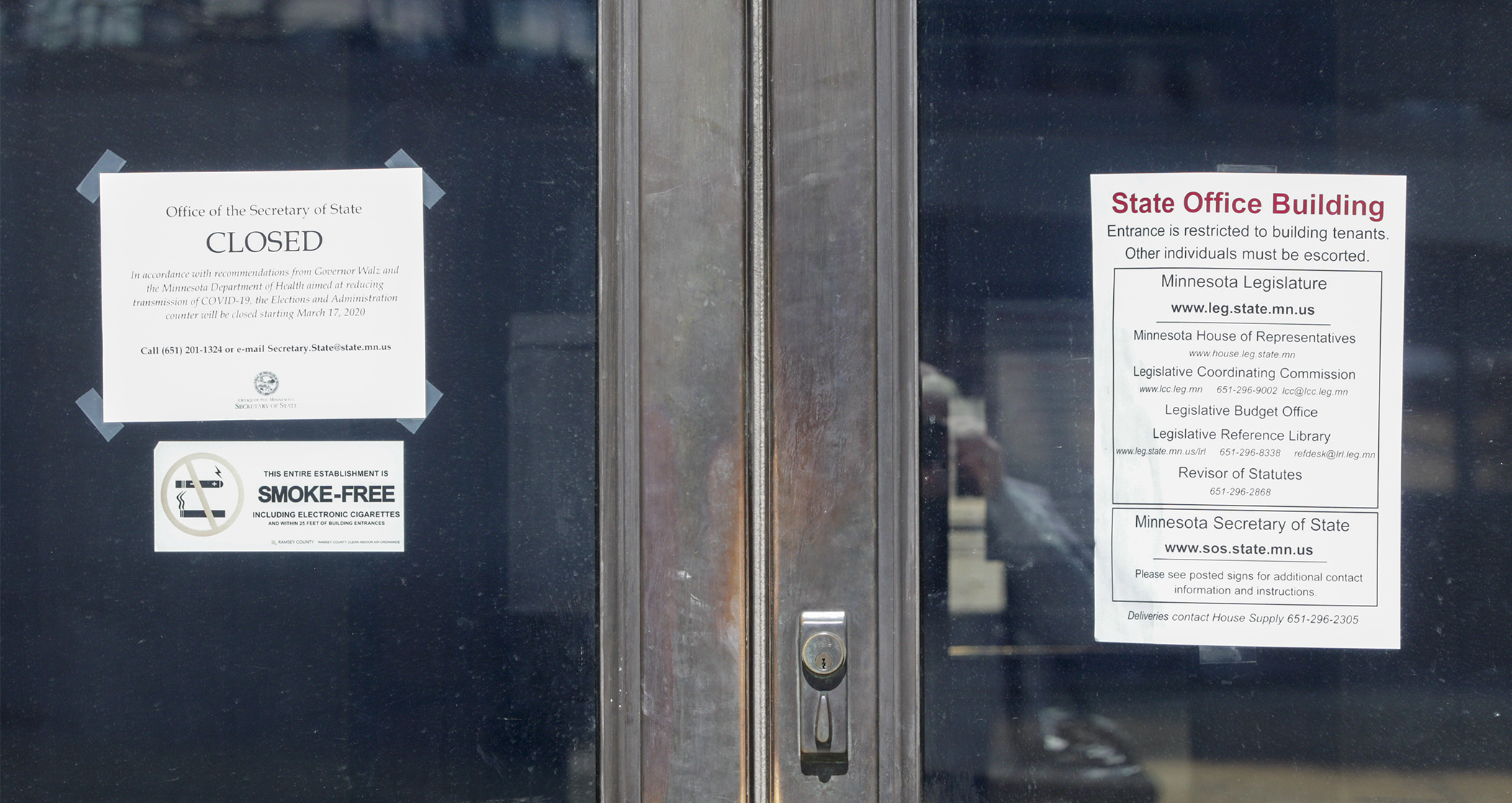Testing key for state COVID-19 strategy, health officials say

Dealing with COVID-19 is like driving a truck, down a curving mountain road, in the dark with no guard rails and no headlights.
But “testing gives us some headlights,” said Daniel Huff, assistant commissioner for the Health Protection Bureau of the Department of Health.
Minnesota is working to both “dramatically ramp up” testing for COVID-19 and to use it strategically, he told the House Health and Human Services Finance Division during a remote hearing Thursday.
In addition to the obvious clinical benefits, testing also helps the state with surveillance – determining the prevalence of the virus and its rate of spread – allowing for targeted help and prevention measures, Huff said during his presentation.
Molecular tests are used to diagnose current infections and can help the state assess how quickly people are becoming infected, and the risk of overloading the state’s health care system – in the truck metaphor, “how fast we’re going and how likely we are to crash," he said.
Results can vary based on both how long the person has been infected, and the collection method, with up to 70% false negatives, Huff said.
Serologic tests are used to detect antibodies created in response to the virus, though they can take up to 14 days after infection to work, and might identify antibodies created in response to milder, seasonal coronavirus infections instead, he said.
These tests can help the state tell how close the population is to herd immunity – metaphorically, the end to the treacherous mountain road. Once a large enough percentage of the population has developed an immunity to the virus, it won’t be able to spread as easily, Huff said.
Testing – with rapid turnaround times – is particularly important for people who don’t have the privilege of effective social distancing. This includes health care workers, first responders, and elderly or disabled people in congregate living facilities, but also people of lower socioeconomic statuses who live in high-density areas, said Dan Hoody, chief medical officer at Hennepin Healthcare.
In Chicago, nearly 70% of COVID-19-related deaths have occurred amongst black individuals from five neighborhoods, despite the fact that they only make up 30% of the city’s population. Similar patterns are being seen in Washington, D.C., Louisiana, and Michigan, he said.
People with pre-existing medical conditions – which can stem from health disparities – are more vulnerable to the virus, Huff said.
Rep. Rena Moran (DFL-St. Paul) urged the Department of Health to more explicitly emphasize the threat COVID-19 poses to people of color when discussing at-risk groups.
Initially, only the Department of Health was able to conduct testing. Now, Mayo Clinic has the highest capacity in the state, while Hennepin and Fairview have both significantly increased their testing capacity, along with other health care groups and commercial labs.
Concerns remain about long-term supply chain issues, a lack of national coordination, and the competition it has caused between individual health care systems and governments. But Minnesota is in a particularly strong position to meet the state’s testing needs, testifiers said.
“What we have in Minnesota is quite unbelievable. I’m extremely proud of the knowledge that exists in this space,” said Jakub Tolar, dean of the University of Minnesota Medical School. “There are many, many ways of not being dependent and left behind … we can rely on our own resilience in the state of Minnesota.”
The University of Minnesota has been working to manufacture effective facemasks and recently got FDA approval for a simple ventilator. It’s also working to streamline the testing process for COVID-19 and manufacture the protein needed for testing kits, Tolar said.
The state’s emergency operations center includes a staff member who is dedicated full-time to working with labs across the state to address supply issues. They’re currently working with a Minnesota manufacturer to develop the right type of swab needed for testing, Huff said.
“We’re doing everything we can from a state perspective,” he said.
Related Articles
Search Session Daily
Advanced Search OptionsPriority Dailies
Ways and Means Committee OKs proposed $512 million supplemental budget on party-line vote
By Mike Cook Meeting more needs or fiscal irresponsibility is one way to sum up the differences among the two parties on a supplemental spending package a year after a $72 billion state budg...
Meeting more needs or fiscal irresponsibility is one way to sum up the differences among the two parties on a supplemental spending package a year after a $72 billion state budg...
Minnesota’s projected budget surplus balloons to $3.7 billion, but fiscal pressure still looms
By Rob Hubbard Just as Minnesota has experienced a warmer winter than usual, so has the state’s budget outlook warmed over the past few months.
On Thursday, Minnesota Management and Budget...
Just as Minnesota has experienced a warmer winter than usual, so has the state’s budget outlook warmed over the past few months.
On Thursday, Minnesota Management and Budget...